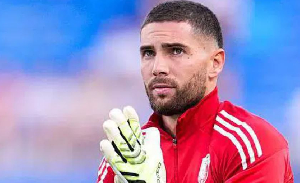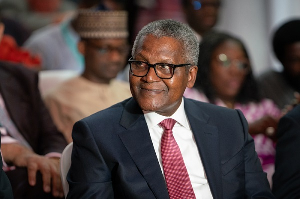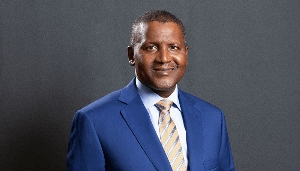Part 1.
Preface: In the aftermath of the elections last December in Ghana, we were subjected to a series of farcical articles authored by no less a person than the Internet gadfly Prof. Kwame Okoampa-Ahoofe with the incongruous title, “The Road to Kigali”. I think there were 22 of them in all. I confess that I did not even read up to half of them.
The choice of title was in apparent reference to the 1994 genocide in Rwanda, in which over 800,000 Watutsis and so-called moderate Hutus were killed by Hutus in revenge attacks precipitated by the shooting down of the plane carrying the Presidents of both Rwanda and Burundi in Kigali, while returning from a peace conference in Tanzania to settle the ongoing sectarian conflicts in the two countries.
That, choosing the Rwanda genocide tragedy as the road on which Ghana has embarked was totally inappropriate is to put it mildly, as the circumstances of the two disputes – causes, configuration of the contesting parties, etc. - afflicting Ghana and Rwanda are completely different. Perhaps, the Kenyan election violence some years back is more appropriate to use as an analogy. Anyway, unless one is totally new to and uninformed about recent political vituperations in Ghana prior to the December 2012 elections, one cannot be excused for not knowing those who are expected to do the killings (Akans or Asantes) and those to be massacred (Ewes, with Gas added for good measure). That this call for ethnic cleansing continues to reverberate in the ranks of the NPP supporters cannot be denied by any honest observer of the political scene in Ghana. That said, I want to make it clear that it is not my intention to do a content analysis of what Prof. Okoampa-Ahoofe’s wrote but rather provide pertinent information on the history and causes of the conflicts in the Great Lakes region of East Africa, of which the Rwandan debacle just form a part. That conflict is still ongoing, with the centre shifted to eastern Congo (DRC), with even much greater death toll, as I foresaw and predicted in the last chapter of the article which follows, first written in December 1996, and published in two parts in July 1997 by The Monitor, Kampala, under the title, Hutus and Tutsis: Stop Mutual Killings! The article soon became the cornerstone of a more ambitious attempt to write a comparative historical analysis of conflicts in three countries: Ghana, Rwanda and Sudan. I think the time is ripe to continue from where I stopped several years ago.
I was compelled to write in response to the blatant untruths and cover-ups that were being peddled not only by the Western media and their governments but by even reputable research bodies and the UN, too embarrassed to admit either their complicity in the genocide or gross negligence in averting the genocide; just as they did about the abysmal US/UN misadventure in Somalia. Our own Kofi Annan was culpable as the then head of the UN Refugee Commission who advised the withdrawal of UN Peace-keepers when the conflict was clearly worsening, one of his admitted greatest regrets as an accomplished UN civil servant. Of course, I was then a research assistant at Christian Michelsen Institute (CMI), Bergen, when CMI, together with the University of York, won the UN contract to write the water-down objective Report on the failure to respond rapidly to the humanitarian need. When the Project Co-ordinator, in the face of the overwhelming evidence, mentioned the role played by France in supporting the Hutus before and during the genocide, France went berserk, demanded that that section should be removed, or failure to do that, the money they contributed towards the writing of the Report be returned! The lady stuck to her gun. It therefore became necessary to tell the story of the continuing genocides in the Great Lakes Region in another forum, hence my article.
It is essentially a condensed summary of complex inter-social relations and historical events spanning centuries, pre-colonial times to the 1990s. The relations between the Watutsis and the Hutus whom they had conquered and subjugated to an Apartheid-like regime of oppression and exploitation was one of the case studies Dr Thakur used in his Political Sociology lectures in our Political Science year group in the late 1970s as an illustration of the sociology of domination. In his capable hands too, what we considered as a children’s book, “Robinson Crusoe”, came to life as a satire on European imperialism and domination of others using brute force (his gun) and the control of the mind and behaviour through the application of religion, the two cogent forces the Watutsis deployed most decisively to control the much larger Hutu population over whom they held sway for centuries.
I have divided this article into two parts for ease of reading, and is publishing it under the original title I gave it.
THE GREAT LAKES IN CONFLICT - THE CHICKENS COMING HOME TO ROOST. PART 1
Much media attention has been focused on the continuing conflicts and the resultant refugee crisis currently engulfing the countries of central and eastern Africa. But the fact remains that not only the ordinary man on the street in Norway, and the West in general, hardly understood the root causes of these events. To most in the West, the conflicts are all about backward tribes which by their nature are prone to such methods to resolve their misunderstandings. Nothing can be further from the truth. The lack of background information or news prior to the onset of the conflicts, the masks the belligerents themselves wear, entrenched self-interests, myths and taboos hide the actual reasons for lingering ethnic animosities in Africa; even to most Africans. These make it very difficult to get to the root causes of Africa’s current conflicts, and find appropriate solutions to them.
It cannot be denied that a correct identification and understanding of causes is essential in finding solutions to the deep cleavages and hatred, in the midst of blatant exploitation, that have been besieging the African continent for millennia. A brief review of the conflicts in both Rwanda and Burundi since 1959 is therefore necessary to provide some facts and focus to interested readers.
That genocide, led by so-called Hutu extremists, had recently occurred in Rwanda, there is no doubt about in the public’s eyes. But that genocide of Hutus had been occurring in Rwanda and Burundi, before European colonisation and then under Belgium/Tutsi rule in the two countries prior to independence is known to only few.
From 1959 onwards, it was the turn of the minority Rwandan Tutsis (ca. 8-15%? of the pop.) to taste what they had been inflicting on the Hutus for centuries, as the Hutus revolted and started massacring them. Hundreds of thousands of Tutsis had to flee into exile from vengeful Hutus. The subsequent killings and persecution of Rwandan Tutsis was described by the famous English philosopher Bertrand Russell as, "the most horrible and systematic human massacre we have witnessed since the extermination of the Jews by the Nazis". That was before Pol Pot and the Khmer Rouge came to power in Cambodia in 1975 and set new records. It was the invasion of thousands of these Tutsi refugee-forces from Uganda, in an attempt to return to Rwanda on 1 October, 1990, under the banner of the Rwandan Patriotic Front (RPF), (with the tacit support of the Ugandan government), that has revived the killings once again. The genocide of April 1994 was just another bloody chapter written, mass killings having begun earlier.
Meanwhile, in neighbouring Burundi, the reverse was the case, as the majority Hutus (ca. 85% of the pop.) were the ones docilely lining up, even in the 1970s, to be killed by the genocidal Tutsis who retained control in that country. Earlier in the 1960s, fearing the same fate as the Rwandan Tutsis, the Burundian Tutsi elite began to tighten their grips on power. Events came to a head in 1964 when the Head of State, the King, Mwami Mwambutsa, had to flee to Switzerland, following disturbances when he refused to appoint a Hutu Prime Minister after a Hutu-led party won a landslide victory in the 1964 general elections. These events brought the Tutsi supremacist Col. Micombero to power.
Following an abortive coup in 1972, Col. Micombero began one of the worst cases of genocide perpetrated in contemporary Africa. The objective was to eliminate all Hutus with education, money and government post. Hutu homes, schools and shops were destroyed. The rest of Africa and the world watched, hardly raising a voice of condemnation. In fact, an OUA delegation flew to Bujumbura to congratulate the brutal military regime for effectively handling its domestic affairs!
Neighbouring countries such as Uganda, Congo DRC (then Zaïre) and Tanzania became the main recipients of the flow of refugees from the two countries. Present developments do not augur well for lasting peace in that part of Africa. Not even the return of some Hutus to Rwanda. The current sequence of destabilising events in the Great Lakes region are just bits being drawn in the deadly game of power being played out in the Great Lakes region, as events in Uganda and Congo, and even interests outside the region, have their own impact. No wonder it was the death of both Presidents Cyprien Ntaryamira of Burundi and Habyarimana of Rwanda, when their plane was shot down in Kigali, that precipitated the 1994 massacre of Tutsis and "moderate" Hutus in Rwanda. It should be noted that over a 100,000 people were killed six months earlier in Burundi when the former President, Pierre Ndadaye, was assassinated.
When the conflict in Rwanda renewed in October, 1990, the world, instead of condemning the killings by both parties, as usual, started lining up to support their favoured parties. Belgium, France and Congo (then Zaïre) sent in troops to back the Hutu regime, with arms supplies coming from countries such as South Africa and Egypt to the Habyarimana regime. This, in spite of a UN embargo on arms supplies to the belligerents. Uganda, of course, was backing the Tutsi refugees, even though the former denies this.
With the important role they had played in the National Resistance Army (NRA) that put Yoweri Museveni in power in Uganda, it was just a matter of time that pay day comes. The Tutsi refugees reportedly received promises of help to return home. It is most improbable that the refugees could have mounted such a big operation without receiving substantial logistical support and the closing of the eyes of Ugandan authorities. The cost in wasted human lives is what we now watch on the TV screens. The repercussions are only beginning to unfold, as Congo (then Zaïre) prepares to recapture its rebel-held territory, if they could.
The RPF was formed by senior officials of the NRA of Tutsi origin. It was led before his death in a mine accident by no less a person than Major General Fred Rwigyema, previously Museveni’s deputy defence minister. Other high-ranking officers of the NRA, senior officials in the RPF, are now leaders of the Tutsi-led regime in Rwanda. Paul Kagame, the current Vice President and Defence Minister, who assumed leadership after the death of Rwigyema, was a security chief in the NRA. The Ugandan equation has been given little focus so far. What are Museveni’s ambitions, beyond getting rid of the thousands of armed and volatile Tutsi refugees?
And what are the interests of France and Belgium, apart from other Western powers in East and Central Africa? An assessment of these will uncover the external forces at play in the crisis of the Great Lakes, and allow some prediction of the direction of events in the ensuing wider conflict.
Opinions of Monday, 8 April 2013
Columnist: Kwawukume, Andy C. Y.














